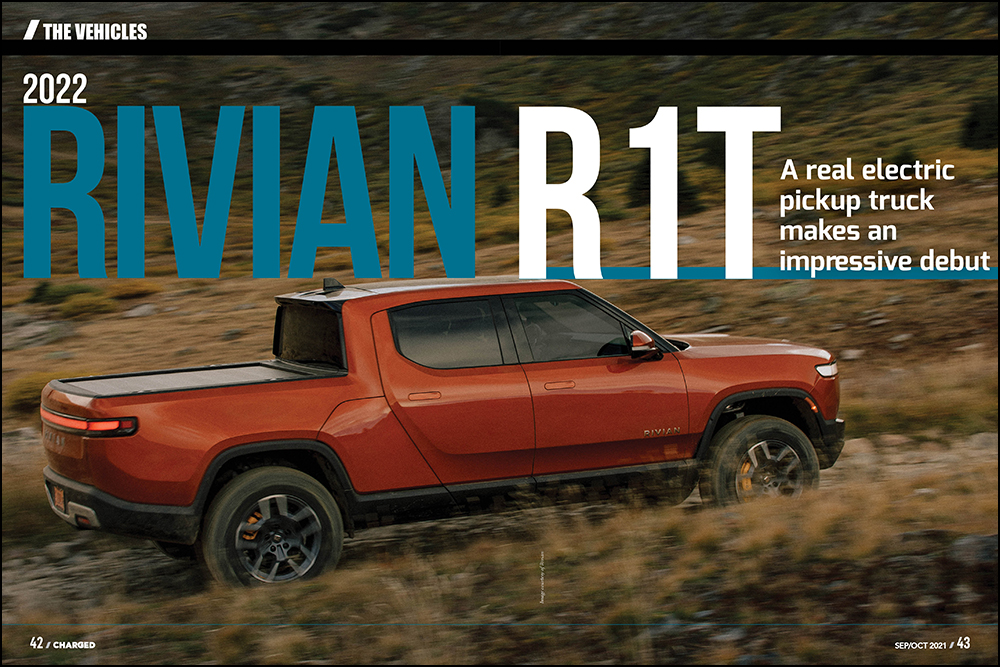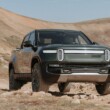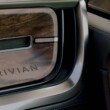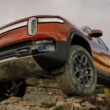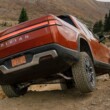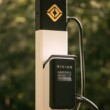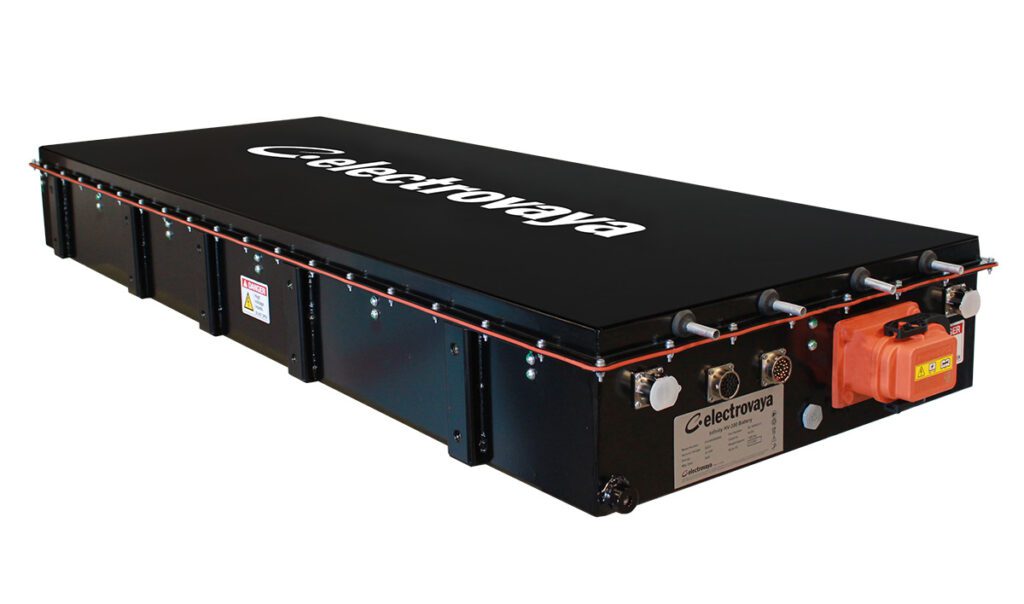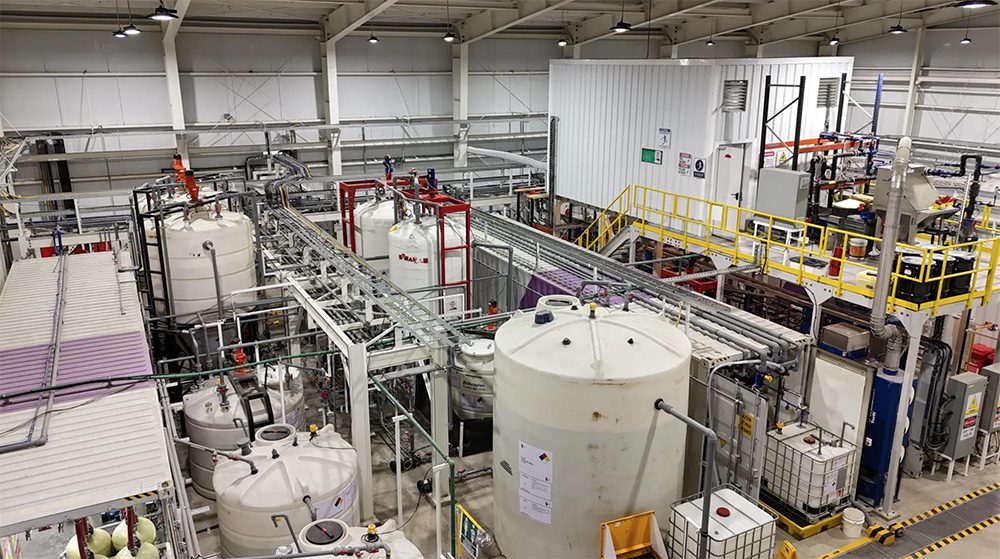Could Rivian emerge as “the next Tesla?” On the strength of its debut truck, that’s not an unreasonable question.
If you want to attract attention, keeping a company in stealth mode for several years is a good way to do it. The startup carmaker Rivian was founded a decade ago by RJ Scaringe, but it didn’t go public with its electric pickup truck and SUV until the 2018 Los Angeles Auto Show. The two vehicles pretty much stole the show that year.
Three years and one global pandemic later, the company is now starting to deliver production versions of its 2022 R1T electric pickup truck to paying customers. In September, it held a press drive in Colorado to show off the pickup to automotive and lifestyle reporters, who largely gave the truck favorable reviews for its performance, off-road capability, and clever design features.
Note that the Rivian R1T isn’t a direct competitor to next year’s Ford F-150 Lightning, the all-electric version of Ford’s best-selling full-size pickup truck. Dimensionally, the R1T sits squarely among the stalwarts in the mid-size truck category: Chevy Colorado, Ford Ranger, Nissan Frontier and Toyota Tacoma.
Targeting luxury truck buyers
With a starting price around $70,000, the R1T is roughly twice as expensive as the base models of any of those mid-size trucks. But Rivian isn’t really targeting those trucks. Instead, it’s aiming to build an authentic-truck brand among what we suspect are current buyers of Land Rovers, top-end GMCs and German luxury trucks.
The company says more than 50,000 people have put down cash for reservations in the sales queues for both the pickup and the SUV that will follow shortly. When we interviewed some of them two years ago at a Rivian event, they were largely affluent buyers who were open to the idea of electric vehicles, but wouldn’t drive anything but a pickup or large SUV. Most already had gasoline pickups or SUVs, and some had Teslas, but for an electric vehicle, they wanted a truck—not one of the compact hatchbacks that made up the market of non-Tesla EVs.
Assuming they’re okay with an electric truck one segment below full-size, the R1T should make them happy. It may have a rounded front end with unusual vertical headlights, but the Rivian is traditionally styled, and instantly identifiable as an American pickup. From the rear, frankly, it’s hard to distinguish it from any other pickup on the road until you read the tailgate lettering.
Capable, quick, clever
The specs of the Rivian R1T are well-known by now. A 135 kWh battery pack under the cabin and bed powers four 150 kW (200 hp) electric motors, one per wheel. That layout was chosen to provide an electric equivalent of the locking mechanical differentials required for serious off-roading.
Rivian quotes acceleration from 0 to 60 mph at about 3 seconds, startling for a truck that weighs 7,000 pounds or more.
Total power is quoted as 600 kW (800 hp), though the two rear motors provide slightly higher torque than the fronts, to assist in off-road hill-climbing. The company quotes acceleration from 0 to 60 mph at about 3 seconds, startling for a truck that weighs 7,000 pounds or more. (It’s worth nothing that that’s still a full ton lighter than the GMC Hummer EV, which comes in at a jaw-dropping 9,000-plus pounds.)
Rivian started its media drive on off-road trails, covering 60 miles and several hours at elevations of 9,000 to 12,000 feet. The trucks acquitted themselves well. It remains unclear how many Rivian owners will take advantage of those capabilities—but trucks are all about authenticity and capability. Range Rover, for instance, does good business selling crossing-the-Gobi-Desert abilities in luxury trucks that may see no more arduous duty than muddy horse farms or lacrosse fields. Perhaps Rivian will follow in its tire tracks.
What will distinguish the Rivian from a more mainstream electric pickup—when such a thing exists—are the design and materials of its interior, and a few very clever features.
It’s as close to a fashion-forward luxury sedan as it is to a pickup truck, and to our eyes, it’s remarkably handsome.
The interior design is clean, spare and modern, and it’s trimmed in a variety of materials that include wood, metal and fabric. It’s as close to a fashion-forward luxury sedan as it is to a pickup truck, and to our eyes, it’s remarkably handsome. Most controls are accessed through the central touchscreen, a la Tesla’s Model 3, which reduces clutter but leads to some irritating quirks. If you habitually adjust your dash vents, for instance, you’ll quickly tire of having to click through a couple of menu layers and then swipe on the screen to move the vents.
Luxury camping accessories
On the other hand, the transverse “gear tunnel” that sits between the back of the cabin and the front of the pickup bed is enormously useful. We put backpacks, camera gear and a host of other stuff into it during the test drive. And the gear-tunnel access doors on each side fold down toward the ground, providing a seat to sit on and a step to reach the roof of the vehicle or to enjoy the view from a higher vantage point.
Perhaps most unexpected, Rivian showed off an optional electric stove-and-oven combination designed to slide in and out of the gear tunnel and draw power from the truck’s battery. Not only that, the drive organizers cooked all the food for Rivian staff and journalists using that setup in a pair of trucks. It was a stunt, granted, but definitely a first for most of us. (The food was splendid.)
There will also be a collapsible bed-mounted sleeping tent, offering the ability to spend a few days off-road while housed and fed in comfort. Using up battery energy for things like cooking and auxiliary power may be a concern for new owners, but Rivian plans to put charging stations at trailheads and other sites it feels its owners are likely to take advantage of (Jeep has similar plans).
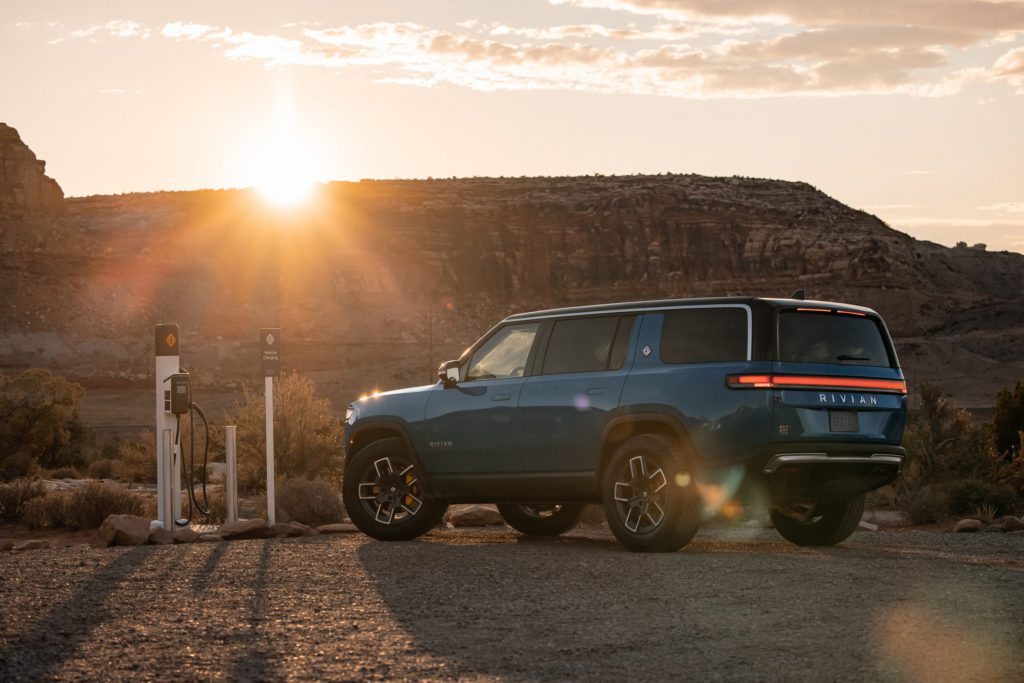
Rivian is launching production slowly and carefully. All but one of the dozen R1Ts on the October media drive were pre-production prototypes with EX appended to their VINs. The documents the company filed for its IPO say it hopes to have delivered 1,000 pickup trucks and 15 of its R1S sport-utility vehicles by the end of 2021.
The next Tesla?
That brings us to the question of the company’s future. Its trucks may have garnered huge attention at the 2018 LA auto show, but it was Amazon’s emergence 10 months later as the leading name in a $700-million investment in Rivian that underscored how seriously the company should be viewed. That funding also came with an order for 100,000 electric delivery vans by 2025.
So, at the same time it’s launching a pair of luxury trucks, Rivian is also developing the Amazon van, prototypes of which have already been spotted testing on public roads. Amazon has invested more in subsequent funding rounds, and it now owns more than 20 percent of Rivian.
Amidst sky-high valuations for many EV makers and suppliers, Rivian filed plans to go public this fall. On November 10, Rivian debuted as a publicly traded company. Finance coverage at the end of October suggested a valuation of $50 billion or more—higher than Kia or Nissan, both of which are decades old and make millions of cars a year. Opening at $80 billion-plus, Rivian blew past all that—making it worth more than General Motors.
That’s not bad for a decade-old company with no notable revenue to date. In fact, it sounds suspiciously like another startup EV-maker—one that, as of this writing, is worth more than the entire rest of the auto industry put together. Can Rivian follow that trajectory? Stay tuned.
This article appeared in Issue 57 – Sept/Oct 2021 – Subscribe now.







